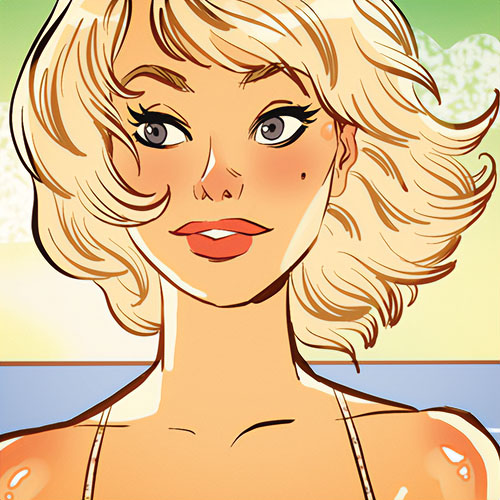Thanks to cable channels like Animal Planet and National Geographic, Nature on PBS, and even the occasional theatrical release (March of the Penguins hit big in 2005, raking in $127 million), you don’t have to head for parts unknown to spend time with cool animals.
Similarly, if conservation’s your thing, you have a bunch of publications, including Sierra, Orion, and Nature Conservancy, to catch you up on efforts to preserve land, maintain ocean habitats, and — no big whup — keep the planet from incinerating.
But your options don’t stop there. And since we like to dig a little in this column, we unearthed some fantastic books and podcasts that also go green. The former are worthy heirs to early nature classics Walden and My First Summer in the Sierra, by Henry David Thoreau and John Muir respectively. As for podcasts, audio is a natural for earthly exploration, what with calls of the wild, birdsong, crashing waves, and so on.
Read on, listen up, and to quote Mahatma Gandhi, be the change you wish to see in the world.
Desert Solitaire (Edward Abbey, 1968)
They called him Cactus Ed. A prickly, heavy-drinking visionary raised in small-town Pennsylvania, Abbey spent two years as the lone park ranger at Arches National Park in southeast Utah canyonland. A decade later, he published an environmental masterpiece distilling his experience, busting on rapacious developers, and rallying America’s nascent green movement. The book celebrates its 50th anniversary this year. Pop open a beer (Ed would approve) and check out his rowdy, ornery hymn to sagebrush and rock.
Winter: Notes from Montana (Rick Bass, 1991)
Arguably America’s best living nature writer, Bass grew up in Houston and worked as a petroleum geologist before radically changing his life. Always interested in nature and wildlife, he moved to the remote Yaak Valley in northwest Montana with his girlfriend and two dogs. This brilliant, wonderfully written book captures their first winter in a valley of 30 people, no electricity, and the Dirty Shame Saloon. Bass walked in snow for the first time. He cut a shitload of firewood. He had close encounters with elk, bobcats, moose, wolves, grizzlies. He got to know rugged neighbors, including Tom Oar, destined for Mountain Men fame on the History Channel. Winter puts the Yaak in your blood.
The Wild Places (Robert Macfarlane, 2007)
Macfarlane is a U.K. version of Rick Bass — at the top of the nature-writing game. A 41-year-old Scot who teaches at Cambridge, he helped recharge the English tradition of landscape writing. Leader of a literary movement that’s been dubbed the New Nature-Writing, this erudite adventurer seeks out the gnarliest, most remote corners of the archipelago (England, Scotland, Ireland). He visits a rugged Welsh island, a vast moor, a mountaintop, roughing it, hiking, exploring. His goal? To generate a new U.K. map, one without roads, its coordinates determined by wildness.
Say Goodbye to the Cuckoo (Michael McCarthy, 2009)
Endlessly fascinating, this book, by a top environmental journalist, raises the planetary alarm by focusing on English birds — specifically those McCarthy calls “spring-bringers.” Every year, millions of epic fliers — cuckoos, swallows, swifts, house martins — migrate back and forth between England and Africa. Their numbers are in scary decline. Full of remarkable facts (swifts eat, sleep, and screw in the air; they almost never touch ground), Say Goodbye has the author hitting the trail in every chapter, searching habitats for birds, introducing experts who have made the study of individual species their life’s work.
H is for Hawk (Helen Macdonald, 2014)
Winner of multiple awards, this book tells the story, in language that glows like a raptor’s eyes, of a woman who tries to heal herself by training a goshawk. In mourning after her dad dies, Macdonald, a veteran falconer, buys a captive-bred hawk she calls Mabel and brings it into her English home, then out into fields and woods. “Bulkier, bloodier, deadlier, scarier,” she writes of this breed. “A reptile. A fallen angel. A griffon,” she writes of Mabel. You learn a lot about hawks, falconry, and the English natural world in H, and it sharpens your sight — though not to the rifle-scope level of a big, lethal goshawk.
Urban Wildlife Podcast
Philadelphia-based reptile expert Billy Brown and birder Tony Croasdale (onetime singer for punk band R.A.M.B.O.) explore critters of the city, from New York terrapins to London scorpions to Shanghai birds. They interview experts and amateurs with stories to tell and cover their own urban adventures. Harpy eagles eating feral cats, anyone?
Outside/In
A favorite of those who swear by nature podcasts, this show, from New Hampshire public radio and host Sam Evans-Brown, offers a range of topics like threats from invasive species and the unintended human costs of clean energy, to wildlife segments (vultures, beavers), to the complex ethics of high-risk rescues in remote wilderness areas.
Costing the Earth
A thoughtful, intrepid, sharply reported offering from England’s BBC Radio, this podcast tackles topics such as the epidemic of wildfires, cruise-ship pollution, sea-level rise in the Solomon Islands, and saving Indonesia’s rainforest. Challenging accepted wisdom, reporting on progress, it focuses on the interface between human life and the environment.
Eyes on Conservation
Produced by a team that also films wildlife documentaries, this podcast features conversations with experts in wildlife biology, environmental justice, and conservation. Recent topics? The impact of plastic refuse. How condors help locate corpses in Southwest canyons. Two women who tracked salmon migration on horseback, from the Pacific coast to Idaho. New research is featured; shows end with ways for listeners to help.
Sea Change Radio
A show revolving around sustainability, the Sea Change podcast, led by host Alex Wise, interviews experts in the field (Bill McKibben, Paul Hawken), and does so weekly. In two recent episodes, we met a Hawaii-based bike maker who uses bamboo for frames, and the CEO of a San Francisco company whose “Fitbit for the planet” measures air pollution.



















